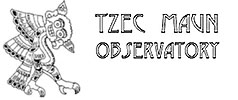

 |
 |
|
|
|
|
Observatory Codes: H10 D25 D96
|
minor planet Melbourne
Asteroid or minor planet 336698 Melbourne was named in honor of the Melbourne Observatory, which was in operation from 1863 to 1944, once housed the largest telescope in the world. The space rock 336698 Melbourne circles the Sun every five and a half years between the paths of Mars and Jupiter. German amateur astronomer Erwin Schwab discovered the asteroid on 5 February 2010 in a distance to Earth of 310 million km. He detected this asteroid from his hometown Egelsbach in Germany using a remotely operated telescope at Moorook, South Australia. The remote controlled access was provided by the Tzec Maun Foundation. The naming was published in the minor planet circular # 84384 on 22 July 2013 as follows:
Stand: 09.12.13 |
|||||||||||||||||||||||||||||||||||||